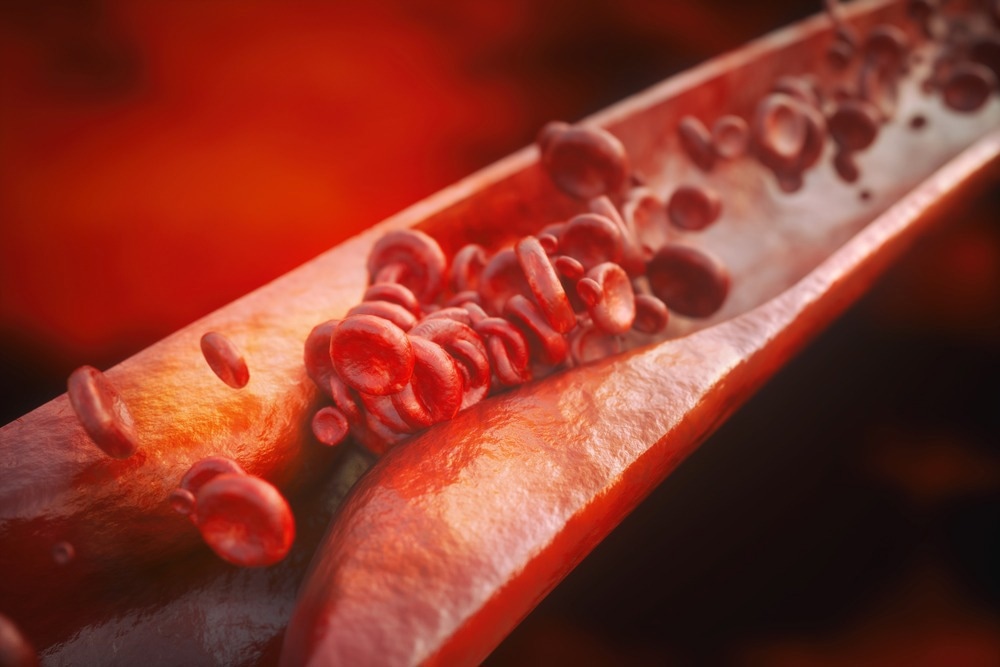In a recent study published in Nature Metabolism, researchers conducted clinical studies on murine animals and humans to evaluate the impact of high protein intake on the amino acid-mammalian target of the rapamycin complex 1 (mTORC1) autophagy signaling pathway. They also assessed the dose-response relationship, downstream effects, and amino acid specificity of mTORC1 activation.
 Study: Identification of a leucine-mediated threshold effect governing macrophage mTOR signalling and cardiovascular risk. Image Credit: Crevis/Shutterstock.com
Study: Identification of a leucine-mediated threshold effect governing macrophage mTOR signalling and cardiovascular risk. Image Credit: Crevis/Shutterstock.com
Background
Animal studies have reported high protein intake associated with cardiovascular disease in Western nations. High-protein diets enhance atherogenesis through amino-acid-mediated mTORC1 signaling and impair autophagy and mitophagy in macrophages. The specific articular processes underlying this activation remain unknown, although the authors speculate that the stimulatory impact may be related to certain 'pathogenic' amino acids.
About the study
In the present study, researchers conducted two clinical experiments to investigate the dose-response connection between dietary protein consumption and the amino acid specificity of the amino acid-mTOR-autophagy pathway in human monocytes or macrophages.
The first experiment examined protein consumption extremes by assessing the impact of fluid meals containing 50% or 10% protein content on mTORC1 pathway activation in monocytes. The second experiment used a more realistic setting, assessing these results in subjects who received standard protein meals or mixed meals with more protein (15% kilocalories vs. 22% kilocalories). The study analyzed monocytes expressing cluster of differentiation 14 (CD14+) but not CD16 since they represent most monocytes in circulation and are most likely to develop into atherosclerotic macrophages.
The team performed flow cytometry and monocyte isolation from platelets. They used western blotting, fluorescence-activated cell sorting (FACS), and immunofluorescence to investigate the impact of different protein content meals on serological amino acid levels, monocyte mTORC1 signaling, and downstream consequences.
The team investigated 14 overweight individuals [based on body mass index (BMI)] twice following a 12-hour overnight fast. The participants consumed low- and very high-level protein meals. The researchers used cultured human monocyte-derived macrophages to investigate the macrophage-specific mTORC1 response to amino acids and to assess dosage effects.
They measured amino acid concentrations in plasma and macrophages using gas chromatography-mass spectrometry and quantified the arginine amounts in plasma using liquid chromatography-mass spectrometry. They determined the size of atherosclerotic lesions using Oil Red O staining of aortic root slices.
The researchers investigated whether leucine-dependent mTORC1 activation occurs in vivo in mice and cultured murine macrophages. ApoE knockout mice were fed six meals over eight weeks, including a moderate-protein western diet, a high-protein western diet, a moderate-protein western diet with leucine and amino acids, more amino acids, and a nitrogen-adjusted version of moderate-protein plus amino acids.
They investigated whether serum amino acids were present in C57BL/6J mice weaned at three weeks old. In vivo, atherosclerosis-related investigations began at eight weeks using male mice of the given genotype fed varied diets.
Results
The study identified leucine as the primary activator of mTOR signaling in macrophages, showing a threshold impact of consuming protein in large quantities and circulating leucine on monocytes or macrophages. Only protein above 25g per meal activates mTOR and has functional consequences. Ingestion of proteins above 22% of dietary energy needs triggers the harmful amino acid-mTORC1-autophagy signaling pathway in human monocytes and macrophages, which causes atherosclerosis in male mice. The study found a strong link between high protein consumption and atherosclerotic cardiovascular disease risk, indicating the possibility for diet advice and treatment measures.
The total amino acid content in plasma increased after having the high-protein liquid meal but not after drinking the low-protein one. During the three-hour postprandial interval, consuming the very high protein level boosted mTORC1 signaling and gradually reduced LC3 signal intensity, indicating mTORC1-mediated autophagy suppression. Western blot analysis showed a robust dose-dependent impact of leucine-mediated mTORC1 activation in HMDMs, as evaluated by phosphorylation of ribosomal protein S6 and ribosomal protein S6 kinase (p-S6K).
The team also found a dose-dependent threshold effect for mTOR-LAMP2 colocalization, suppression of autophagy (diminished LC3 puncta formation), and mitophagy (reduced colocalization of the mitochondrial marker COXIV with the autophagosome marker LC3). They observed significantly increased levels of four amino acids (Leu, Ile, Val, and Thr) in mice following protein gavage compared to control gavage.
Leucine was the most effective mTORC1 activator, with 1.6 g of protein per kg of gavage resulting in higher mTORC1 activation than 0.8 g of protein per kg of gavage. The study revealed that increased dietary leucine is both required and sufficient to produce the pro-atherogenic impact of a high-protein diet in vivo.
The study findings showed that high protein consumption, notably through elevated plasma leucine, might suppress mTORC1-mediated autophagy and atherogenesis in monocytes and macrophages, with critical clinical and public health implications.
Although higher protein consumption than the recommended allowance of 0.8 grams/kg/day is regarded safe, the study suggests caution and more clinical studies. Leucine was the primary amino acid responsible for activating mTOR in macrophages, and increasing protein consumption had a threshold effect on the detrimental signaling pathway.
A comprehensive examination is required to determine the accurate threshold between dietary protein benefits and negative health impacts.
Journal reference:
- Zhang, X., Kapoor, D., Jeong, SJ. et al. Identification of a leucine-mediated threshold effect governing macrophage mTOR signalling and cardiovascular risk. Nat Metab 6, 359–377 (2024). doi: https://doi.org/10.1038/s42255-024-00984-2